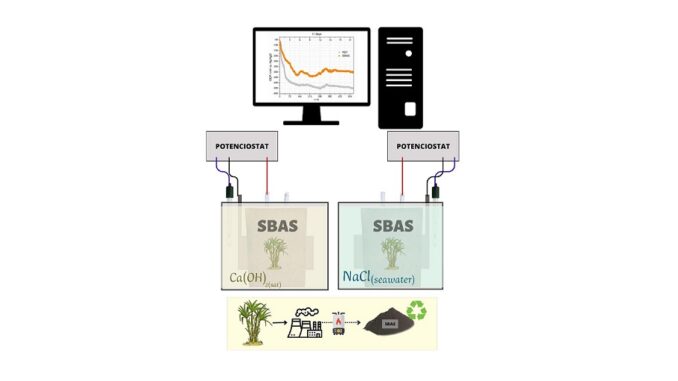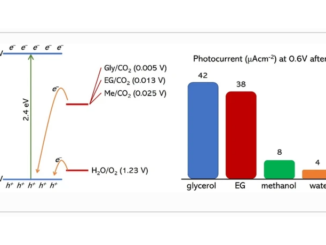
Electrochemical study on the chloride corrosion susceptibility of cementitious composites produced with sugarcane bagasse ash sand
Abstract: Sugarcane bagasse ash sand (SBAS) has been studied as a potential additive for reinforcement structures, but long-term (more than a week) studies on its use in test specimens have not been conducted considering the durability of these concretes. Additionally, there has been no assessment of electrochemical corrosion in corrosive media, such as chloride solutions. In this study, we conducted a physical and electrochemical investigation of SBAS, which partially replaces fine sand in a mortar configuration. Electrochemical impedance spectroscopy and open circuit potential monitoring techniques were used to evaluate the reinforcements in Ca(OH)2 (curing environment) and NaCl 3.5% (aggressive environment), and SEM-EDS was used to analyze the reinforcement surface. During the curing process, SBAS concrete formed a passivation film after a longer time (7–14 days) than the reference (REF) (7 days), and the passive film showed higher resistance values than the REF sample. After 191 days in the chloride medium, REF and SBAS samples presented similar corrosion resistance. Therefore, SBAS-reinforced concrete could be a sustainable and effective alternative to conventional concrete for structural applications.
Author(s): Rezende, M.A.M. ; Corradini, P.G.; Sales, A.; Mascaro, L.H.
Construction and Building Materials
Published: 15 September 2023, Volume 397, 132341
DOI: https://doi.org/10.1016/j.conbuildmat.2023.132341
CDMF
The CDMF, hosted at the Federal University of São Carlos (UFSCar), is one of the Research, Innovation and Dissemination Centers (RIDC) supported by the São Paulo State Research Support Foundation (Fapesp), and also receives investment from the National Council Scientific and Technological Development (CNPq), from the National Institute of Science and Technology of Materials in Nanotechnology (INCTMN).




